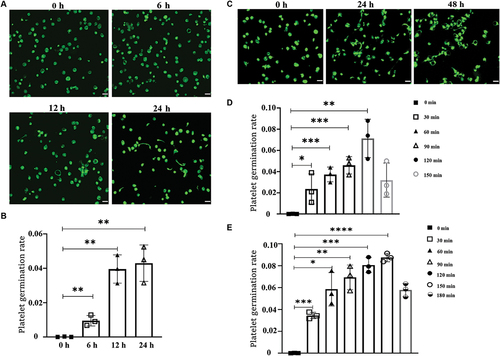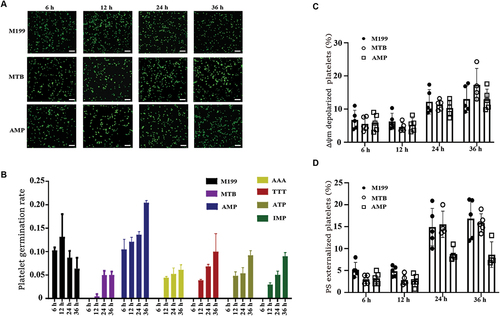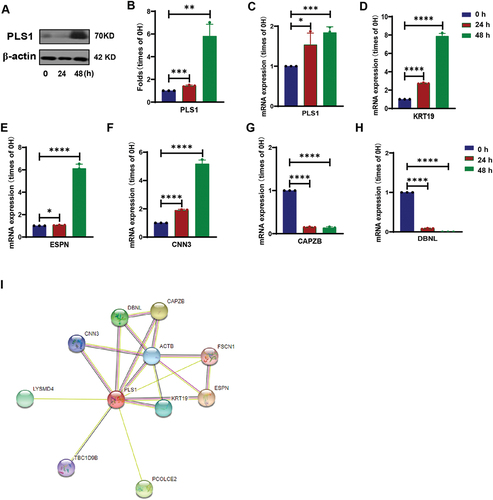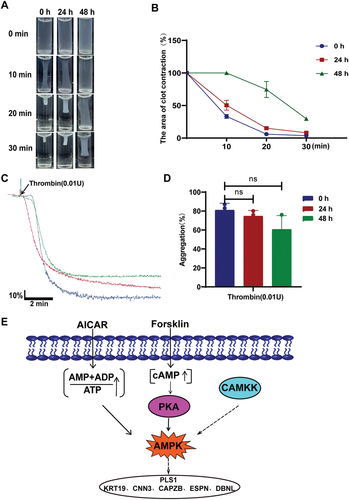Figures & data
Figure 1. Platelets in PRP cultured at 37°C show “spores” and increase in number.

Figure 2. Different components in M199 medium promote platelet sprouting.

Figure 3. Activation of AMPK promotes sporulation of platelets.

Figure 4. The cytoskeleton protein of spore-like platelets cultured in PRP has significantly a different expression.

Figure 5. Spore platelets cultured in PRP still have platelet function.

